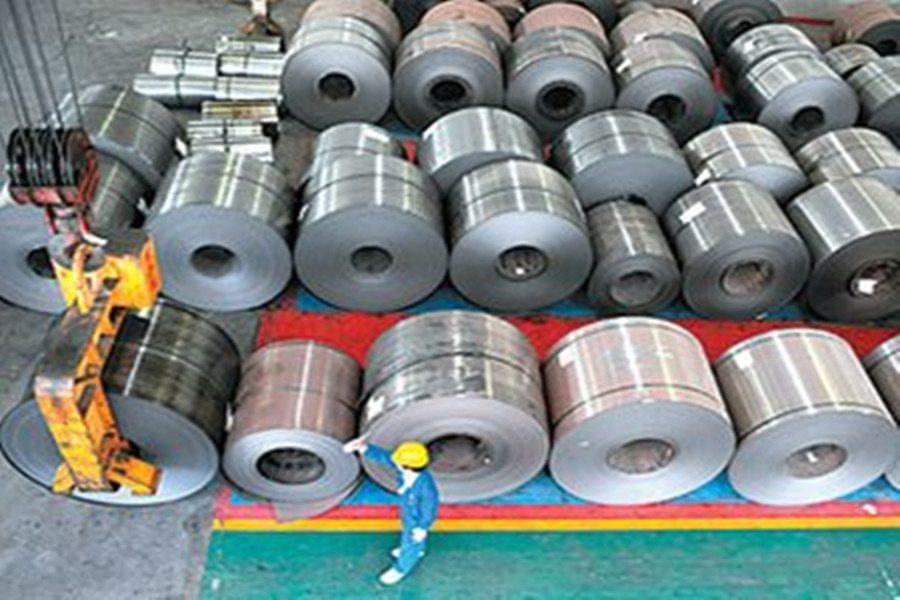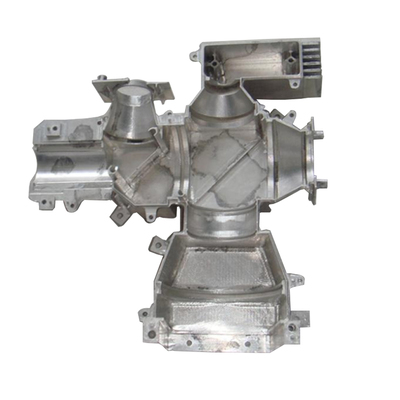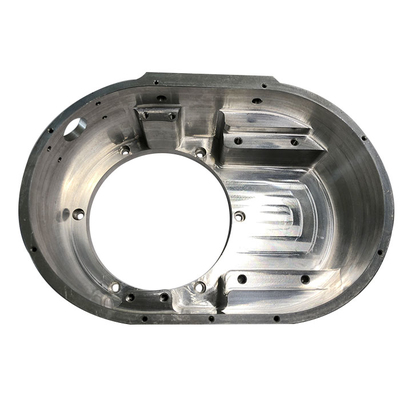The steel industry may "cut carbon" opportunities and challenges coexist
The participation of Chinese steel companies in carbon trading can form a compelling mechanism to eliminate outdated production capacity in the long run, and promote the transformation and upgrading of the steel industry.

After the electric power industry took the lead in the national carbon emission trading market at the end of 2017, the steel industry carbon trading market has also entered a critical stage of advancement.
Not long ago, Li Xinchuang, director of the Metallurgical Industry Planning and Research Institute, revealed at the low-carbon transformation capacity building and technology exchange meeting of the steel industry in Zhangjiagang, Jiangsu, that the steel industry carbon emission trading quota plan is currently being studied and formulated.
As an energy-intensive industry, the steel industry’s greenhouse gas emissions account for approximately 7% of the global greenhouse gas emissions. China is also the world's largest steel producer and consumer, accounting for nearly 50% of global crude steel output. Industry carbon emissions account for nearly 15% of China's total carbon emissions, and account for more than 60% of global carbon emissions from the steel industry.
In this regard, Li Xinchuang emphasized that tackling climate change is the common responsibility of the global steel industry. China's steel industry and enterprises should fully realize that green and low-carbon development is an important direction for deepening the reform of the ecological civilization construction system in the new era.
Opportunities and challenges coexist
Looking back on 2017, the global steel industry's low-carbon transition is facing new opportunities and challenges-the International Energy Agency launched a study on the low-carbon technology roadmap for the global steel industry; EU steel companies restarted three new low-carbon smelting research programs; China officially launched The carbon emission trading system will become the world's largest carbon trading market.
From the perspective of countries implementing carbon trading, the steel industry generally has concerns about carbon trading. European steel companies believe that the EU’s ambitious emission reduction targets have increased corporate costs, and companies currently lack more advanced technologies and sufficient funds to achieve emission reduction targets; the Korea Iron and Steel Association believes that insufficient carbon emission quotas will affect steel production and increase The development dilemma of the steel industry.
Some analysts believe that my country's steel companies participating in carbon trading may also have a certain negative impact on the industry in the short term, but in the long run, it can form a forceful mechanism to eliminate outdated production capacity and promote the transformation and upgrading of the steel industry. By participating in carbon trading, on the one hand, it can promote enterprises to improve production processes, update production equipment and use low-carbon energy; on the other hand, it can encourage enterprises to actively innovate and abandon high-carbon emission products and businesses.
At present, Chinese steel companies are also actively participating in carbon market transactions, and Baosteel is one of the earliest companies involved in carbon trading in China. Zhang Jiancheng, assistant to the president of Shenzhen Carbon Emissions Exchange Co., Ltd., introduced to reporters that Baosteel actively participated in the formulation of relevant policies and standards in Shanghai when participating in the carbon emissions trading pilot work, and organized technical exchanges with relevant professional organizations to support Shanghai’s carbon emissions. The construction of the trading market. During the pilot period, Baosteel's carbon emissions have been declining year by year, and the cumulative carbon emissions have fallen by 5% compared with the quota issued by Shanghai.
In addition, after applying for 5 CDM (Clean Development Mechanism) projects, WISCO reduced 3.16 million tons of carbon dioxide emissions each year. Shougang Group is also actively carrying out the development of national certified voluntary emission reduction projects.
my country promises to the international community that "carbon dioxide emissions will reach a peak around 2030 and strive to reach the peak as soon as possible, and carbon dioxide emissions per unit of GDP will be reduced by 60%-65% from 2005." As a key carbon emission industry, the iron and steel industry is an important part of fulfilling the country’s responsibilities for responding to climate change targets.
According to statistics, in the past 10 years, the carbon dioxide intensity per ton of steel in the steel industry has dropped by about 25%, making an important contribution to the implementation of the national climate change target. But despite this, considering that the level of industrial added value has not achieved a significant increase, the contribution of the steel industry to the low-carbon economy is still insufficient, and the task of fulfilling the future low-carbon development goals is facing challenges.
Force the industry's low-carbon transformation
The steel industry is the main target and core participant of the carbon trading market, and mandatory reduction of carbon dioxide will also force steel companies to develop low-carbon technologies.
Li Bing, director of the Low-Carbon Development Research Center of the Metallurgical Industry Planning and Research Institute, said that technology leadership is the commanding height of low-carbon transformation and development. Decarbonization technology focusing on terminal control.
In order to welcome the upcoming carbon trading, major domestic steel companies are actively exploring from the technical side. According to Bo Hongwei, Deputy Minister of Energy and Environmental Protection of Baowu Group’s Zhanjiang Base, Zhanjiang Iron and Steel’s steelmaking project adopts new converter flue gas waste heat recovery and utilization technology. The duct then enters the dust removal tower, the flue gas temperature can be reduced from the original 1000°C to 830°C, and the steam recovery volume can be increased from 80 kg/ton to 9 kg/ton, while ensuring that the concentration of particulate matter at the flue gas outlet (standard state) is less than 20 mg/ cubic meter.
Li Bing also stated that in the next stage, the blast furnace-converter process smelting process of China's iron and steel industry will still dominate, and fuel consumption such as coal and coke will account for more than 90% of the primary energy of iron and steel enterprises. Strengthening the optimization of the raw and fuel structure is also a key to the low-carbon development of iron and steel. Important link. The key optimization links should be focused on the raw material preparation process, coking process, sintering process, pelletizing process, and ironmaking process of steel production.
"High-carbon energy structure is the main source of structural pollution in the steel industry. Carbon emissions trading will accelerate the low-carbon transition of the steel industry, improve the energy structure, and solve the ecological and environmental problems caused by coal as the main energy structure from the source." Li Xinchuang said.
He also said that the iron and steel industry is a key industry for reducing capacity, adjusting structure, and promoting transformation. It will accelerate the implementation of green transformation with the concept of low-carbon development, develop energy saving, environmental protection, renewable energy and other emerging industries, and achieve lower costs and better quality. The allocation of resources will be an important starting point for accelerating the conversion of the “old kinetic energy” to the “new kinetic energy” of the iron and steel industry.
Enlightenment of Low-Carbon Transition in Developed Countries
How my country develops low-carbon economy and low-carbon industries, the experience of developed countries is worth learning and reference.
Li Bing said that Japan has re-evaluated the long-term impact of the steel industry on surrounding industries and people’s lives from the perspective of the entire life cycle, and expanded the scope of energy consumption assessment for the steel industry. It is worth noting that in the course of Japan's low-carbon development, it is particularly important for the government to implement fiscal policies to assist, including the budget policies, tax reduction policies, and carbon tax collection policies implemented by Japan in the process of promoting carbon emission reduction.
In addition, the determination of the German government is large enough to set itself more stringent standards based on the EU's relevant low-carbon directives, and the challenges brought about by this are even greater. While establishing relevant legal projects, Germany has carried out practical low-carbon actions mainly in energy structure, improving energy efficiency, and the development of renewable energy, established a carbon dioxide trade emission system, and conducted an analysis of greenhouse gas emissions.
"my country should also promptly change the concept of green development, actively promote the progress of low-carbon technology, and implement the low-carbon development of the steel industry." Li Bing suggested accordingly.
Li Xinchuang said that, on the one hand, China’s steel industry and companies should actively strengthen communication with government departments, keep abreast of the development direction of policies and paths, and actively plan and formulate low-carbon development strategic plans to win broader development for industry companies. Space; on the other hand, low-carbon transformation is an inherent requirement for enterprise development. Enterprises should establish carbon strategic thinking, proactively innovate, consolidate the building of low-carbon development capabilities, strengthen the building of professional talents, learn about outstanding enterprises and advanced technologies, and strengthen implementation. Effective energy-saving, carbon-reduction, and quality-enhancing actions.
Link to this article: The steel industry may "cut carbon" opportunities and challenges coexist
Reprint Statement: If there are no special instructions, all articles on this site are original. Please indicate the source for reprinting:https://www.cncmachiningptj.com
 PTJ® provides a full range of Custom manufacturer of precision fabricated parts made from aluminum parts, brass parts, bronze, copper parts, high yield alloy, low carbon steel investment casting, high carbon steel and stainless steel alloy. Capable of handling parts up to +/-0.0002 in. tolerance. Processes include cnc turning, cnc milling, laser cutting,.ISO 9001:2015 &AS-9100 certified.
PTJ® provides a full range of Custom manufacturer of precision fabricated parts made from aluminum parts, brass parts, bronze, copper parts, high yield alloy, low carbon steel investment casting, high carbon steel and stainless steel alloy. Capable of handling parts up to +/-0.0002 in. tolerance. Processes include cnc turning, cnc milling, laser cutting,.ISO 9001:2015 &AS-9100 certified.
Tell us a little about your project’s budget and expected delivery time. We will strategize with you to provide the most cost-effective services to help you reach your target,You are welcome to contact us directly ( [email protected] ) .

- 5 Axis Machining
- Cnc Milling
- Cnc Turning
- Machining Industries
- Machining Process
- Surface Treatment
- Metal Machining
- Plastic Machining
- Powder Metallurgy Mold
- Die Casting
- Parts Gallery
- Auto Metal Parts
- Machinery Parts
- LED Heatsink
- Building Parts
- Mobile Parts
- Medical Parts
- Electronic Parts
- Tailored Machining
- Bicycle Parts
- Aluminum Machining
- Titanium Machining
- Stainless Steel Machining
- Copper Machining
- Brass Machining
- Super Alloy Machining
- Peek Machining
- UHMW Machining
- Unilate Machining
- PA6 Machining
- PPS Machining
- Teflon Machining
- Inconel Machining
- Tool Steel Machining
- More Material





